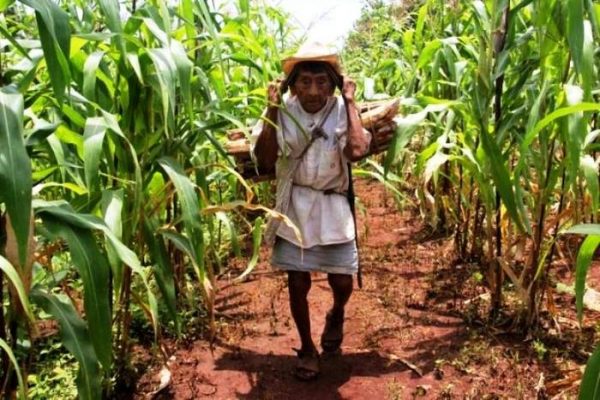The ancient Maya considered corn as a divine gift of the gods. Today, their knowledge of corn cultivation can be a valuable tool for promoting organic crops that are in increasing global demand, and are more environmentally friendly, resulting in a better quality of life for the Mayas of the XXI Century, reported the specialist Bernardo Caamal Itza.
Caamal Itza, a Maya culture expert and researcher, stated that corn has been one of the most successful self-sustaining cultivation systems for thousands of years.
Under the Xok K’iin agriculture and corn cultivation of the Maya, agroecological practices to the impacts of climate change workshop, he said that the basis of this is the extensive knowledge that the Maya achieved through observation of nature and the different attributes of plants.
He explained that the Maya communities sow and grow their fields with practices used since ancient times, taking into consideration details such as the best solar and lunar seasons, and have a broad knowledge of the so-called “photoperiods”.
He added that these are the parts of the day when living beings like plants are exposed to sunlight.
All this generates better blossoming and therefore better and greater production of fruits and vegetables, which still are a vital part of the diet and livelihoods of families living in Maya communities in Yucatan. As well as other parts of the Peninsula, said the specialist.
In addition, he said there also is a broad knowledge of herbal medicine, which is not only used for the manufacture of medicinal products, but is also used as a fungicide and to combat pests.
Among the plants that have started to popularize the most, there is the tree known as neem (Azadirachta Indica) which is a fast growing tree that can reach 15 to 20 meters high.
Currently, neem leaves are the most used in the treatment for many diseases, such as diabetes, hypertension, and cholesterol. Neem cleanses the body of impurities, helps with skin problems, and has antibacterial qualities, among others, he said.
However, in the Maya communities, it’s now also used as a tool to control pests, it has proven to be efficient in fighting the “white fly” which is one of the major threats to the cultivation of fuits and vegetables.
This insecticide action avoids the use of chemicals and pesticides that can contaminate the product, which is undesirable; when what you want achieve is to have a more organic process in the production to be able to have the so-called “organic products”, he said.
There is also a great knowledge about the use of lime, soil preparation and the amount and variety of composts and fertilizers that can be used or not in certain crops.
He added that it is important to disseminate and preserve this knowledge to promote friendlier food production for the environment.
Source: 20minutos.com.mx


